A lava flow is an outpouring of lava during an effusive eruption. (An explosive eruption, by contrast, produces a mixture of volcanic ash and other fragments called tephra, not lava flows.) The viscosity of most lava is about that of ketchup, roughly 10,000 to 100,000 times that of water. Even so, lava can flow great distances before cooling causes it to solidify, because lava exposed to air quickly develops a solid crust that insulates the remaining liquid lava, helping to keep it hot and inviscid enough to continue flowing.
The word lava comes from Italian and is probably derived from the Latin word labes, which means a fall or slide. An early use of the word in connection with extrusion of magma from below the surface is found in a short account of the 1737 eruption of Vesuvius, written by Francesco Serao, who described "a flow of fiery lava" as an analogy to the flow of water and mud down the flanks of the volcano (a lahar) after heavy rain.
Properties of lava
Composition
Solidified lava on the Earth's crust is predominantly silicate minerals: mostly feldspars, feldspathoids, olivine, pyroxenes, amphiboles, micas and quartz. Rare nonsilicate lavas can be formed by local melting of nonsilicate mineral deposits or by separation of a magma into immiscible silicate and nonsilicate liquid phases.
Silicate lavas
Silicate lavas are molten mixtures dominated by oxygen and silicon, the most abundant elements of the Earth's crust, with smaller quantities of aluminium, calcium, magnesium, iron, sodium, and potassium and minor amounts of many other elements. Petrologists routinely express the composition of a silicate lava in terms of the weight or molar mass fraction of the oxides of the major elements (other than oxygen) present in the lava.
The physical behavior of silicate magmas is dominated by the silica component. Silicon ions in lava strongly bind to four oxygen ions in a tetrahedral arrangement. If an oxygen ion is bound to two silicon ions in the melt, it is described as a bridging oxygen, and lava with many clumps or chains of silicon ions connected by bridging oxygen ions is described as partially polymerized. Aluminium in combination with alkali metal oxides (sodium and potassium) also tends to polymerize the lava. Other cations, such as ferrous iron, calcium, and magnesium, bond much more weakly to oxygen and reduce the tendency to polymerize. Partial polymerization makes the lava viscous, so lava high in silica is much more viscous than lava low in silica.
Because of the role of silica in determining viscosity and because many other properties of a lava (such as its temperature) are observed to correlate with silica content, silicate lavas are divided into four chemical types based on silica content: felsic, intermediate, mafic, and ultramafic.
Felsic lava
Felsic or silicic lavas have a silica content greater than 63%. They include rhyolite and dacite lavas. With such a high silica content, these lavas are extremely viscous, ranging from 108 cP (105 Pa⋅s) for hot rhyolite lava at 1,200 °C (2,190 °F) to 1011 cP (108 Pa⋅s) for cool rhyolite lava at 800 °C (1,470 °F).[13] For comparison, water has a viscosity of about 1 cP (0.001 Pa⋅s). Because of this very high viscosity, felsic lavas usually erupt explosively to produce pyroclastic (fragmental) deposits. However, rhyolite lavas occasionally erupt effusively to form lava spines, lava domes or "coulees" (which are thick, short lava flows). The lavas typically fragment as they extrude, producing block lava flows. These often contain obsidian.
Felsic magmas can erupt at temperatures as low as 800 °C (1,470 °F). Unusually hot (>950 °C; >1,740 °F) rhyolite lavas, however, may flow for distances of many tens of kilometres, such as in the Snake River Plain of the northwestern United States.
Intermediate lava
Intermediate or andesitic lavas contain 52% to 63% silica, and are lower in aluminium and usually somewhat richer in magnesium and iron than felsic lavas. Intermediate lavas form andesite domes and block lavas and may occur on steep composite volcanoes, such as in the Andes. They are also commonly hotter than felsic lavas, in the range of 850 to 1,100 °C (1,560 to 2,010 °F). Because of their lower silica content and higher eruptive temperatures, they tend to be much less viscous, with a typical viscosity of 3.5 × 106 cP (3,500 Pa⋅s) at 1,200 °C (2,190 °F). This is slightly greater than the viscosity of smooth peanut butter. Intermediate lavas show a greater tendency to form phenocrysts. Higher iron and magnesium tends to manifest as a darker groundmass, including amphibole or pyroxene phenocrysts.
Mafic lava
Mafic or basaltic lavas are typified by relatively high magnesium oxide and iron oxide content (whose molecular formulas provide the consonants in mafic) and have a silica content limited to a range 52% to 45%. They generally erupt at temperatures of 1,100 to 1,200 °C (2,010 to 2,190 °F) and at relatively low viscosities, around 104 to 105 cP (10 to 100 Pa⋅s). This is similar to the viscosity of ketchup, although it is still many orders of magnitude higher than that of water. Mafic lavas tend to produce low-profile shield volcanoes or flood basalts, because the less viscous lava can flow for long distances from the vent. The thickness of a solidified basaltic lava flow, particularly on a low slope, may be much greater than the thickness of the moving molten lava flow at any one time, because basaltic lavas may "inflate" by a continued supply of lava and its pressure on a solidified crust. Most basaltic lavas are of ʻaʻā or pāhoehoe types, rather than block lavas. Underwater, they can form pillow lavas, which are rather similar to entrail-type pahoehoe lavas on land.
Ultramafic lava
Ultramafic lavas, such as komatiite and highly magnesian magmas that form boninite, take the composition and temperatures of eruptions to the extreme. All have a silica content under 45%. Komatiites contain over 18% magnesium oxide and are thought to have erupted at temperatures of 1,600 °C (2,910 °F). At this temperature there is practically no polymerization of the mineral compounds, creating a highly mobile liquid. Viscosities of komatiite magmas are thought to have been as low as 100 to 1000 cP (0.1 to 1 Pa⋅s), similar to that of light motor oil. Most ultramafic lavas are no younger than the Proterozoic, with a few ultramafic magmas known from the Phanerozoic in Central America that are attributed to a hot mantle plume. No modern komatiite lavas are known, as the Earth's mantle has cooled too much to produce highly magnesian magmas.
Alkaline lavas
Some silicate lavas have an elevated content of alkali metal oxides (sodium and potassium), particularly in regions of continental rifting, areas overlying deeply subducted plates, or at intraplate hotspots. Their silica content can range from ultramafic (nephelinites, basanites and tephrites) to felsic (trachytes). They are more likely to be generated at greater depths in the mantle than subalkaline magmas. Olivine nephelinite lavas are both ultramafic and highly alkaline, and are thought to have come from much deeper in the mantle of the Earth than other lavas.
Non-silicate lavas
Some lavas of unusual composition have erupted onto the surface of the Earth. These include Carbonatite and natrocarbonatite lavas are known from Ol Doinyo Lengai volcano in Tanzania, which is the sole example of an active carbonatite volcano. Carbonatites in the geologic record are typically 75% carbonate minerals, with lesser amounts of silica-undersaturated silicate minerals (such as micas and olivine), apatite, magnetite, and pyrochlore. This may not reflect the original composition of the lava, which may have included sodium carbonate that was subsequently removed by hydrothermal activity, though laboratory experiments show that a calcite-rich magma is possible. Carbonatite lavas show stable isotope ratios indicating they are derived from the highly alkaline silicic lavas with which they are always associated, probably by separation of an immiscible phase. Natrocarbonatite lavas of Ol Doinyo Lengai are composed mostly of sodium carbonate, with about half as much calcium carbonate and half again as much potassium carbonate, and minor amounts of halides, fluorides, and sulphates. The lavas are extremely fluid, with viscosities only slightly greater than water, and are very cool, with measured temperatures of 491 to 544 °C (916 to 1,011 °F).
Iron oxide lavas are thought to be the source of the iron ore at Kiruna, Sweden which formed during the Proterozoic. Iron oxide lavas of Pliocene age occur at the El Laco volcanic complex on the Chile-Argentina border. Iron oxide lavas are thought to be the result of immiscible separation of iron oxide magma from a parental magma of calc-alkaline or alkaline composition.
Sulfur lava flows up to 250 metres (820 feet) long and 10 metres (33 feet) wide occur at Lastarria volcano, Chile. They were formed by the melting of sulfur deposits at temperatures as low as 113 °C (235 °F).
The term "lava" can also be used to refer to molten "ice mixtures" in eruptions on the icy satellites of the Solar System's gas giants.
Rheology
The behavior of lava flows is mostly determined by the lava's viscosity. While the temperature of common silicate lava ranges from about 800 °C (1,470 °F) for felsic lavas to 1,200 °C (2,190 °F) for mafic lavas, its viscosity ranges over seven orders of magnitude, from 1011 cP (108 Pa⋅s) for felsic lavas to 104 cP (10 Pa⋅s) for mafic lavas. Lava viscosity is mostly determined by composition but also depends on temperature and shear rate.
Lava viscosity determines the kind of volcanic activity that takes place when the lava is erupted. The greater the viscosity, the greater the tendency for eruptions to be explosive rather than effusive. As a result, most lava flows on Earth, Mars, and Venus are composed of basalt lava. On Earth, 90% of lava flows are mafic or ultramafic, with intermediate lava making up 8% of flows and felsic lava making up just 2% of flows. Viscosity also determines the aspect (thickness relative to lateral extent) of flows, the speed with which flows move, and the surface character of the flows.
When highly viscous lavas erupt effusively rather than their more common explosive form, they almost always erupt as high-aspect flows or domes. These flows take the form of block lava rather than ʻaʻā or pāhoehoe. Obsidian flows are common. Intermediate lavas tend to form steep stratovolcanoes, with alternating beds of lava from effusive eruptions and tephra from explosive eruptions. Mafic lavas form relatively thin flows that can move great distances, forming shield volcanoes with gentle slopes.
In addition to melted rock, most lavas contain solid crystals of various minerals, fragments of exotic rocks known as xenoliths, and fragments of previously solidified lava. The crystal content of most lavas gives them thixotropic and shear thinning properties. In other words, most lavas do not behave like Newtonian fluids, in which the rate of flow is proportional to the shear stress. Instead, a typical lava is a Bingham fluid, which shows considerable resistance to flow until a stress threshold, called the yield stress, is crossed. This results in plug flow of partially crystalline lava. A familiar example of plug flow is toothpaste squeezed out of a toothpaste tube. The toothpaste comes out as a semisolid plug, because shear is concentrated in a thin layer in the toothpaste next to the tube and only there does the toothpaste behave as a fluid. Thixotropic behavior also hinders crystals from settling out of the lava. Once the crystal content reaches about 60%, the lava ceases to behave like a fluid and begins to behave like a solid. Such a mixture of crystals with melted rock is sometimes described as crystal mush.
Lava flow speeds vary based primarily on viscosity and slope. In general, lava flows slowly, with typical speeds for Hawaiian basaltic flows of 0.40 km/h (0.25 mph) and maximum speeds of 10 to 48 km/h (6 to 30 mph) on steep slopes. An exceptional speed of 32 to 97 km/h (20 to 60 mph) was recorded following the collapse of a lava lake at Mount Nyiragongo. The scaling relationship for lavas is that the average speed of a flow scales as the square of its thickness divided by its viscosity. This implies that a rhyolite flow would have to be about a thousand times thicker than a basalt flow to flow at a similar speed.
Temperature
The temperature of most types of molten lava ranges from about 800 °C (1,470 °F) to 1,200 °C (2,190 °F). depending on the lava's chemical composition. This temperature range is similar to the hottest temperatures achievable with a forced air charcoal forge. Lava is most fluid when first erupted, becoming much more viscous as its temperature drops.
Lava flows quickly develop an insulating crust of solid rock as a result of radiative loss of heat. Thereafter the lava cools by very slow conduction of heat through the rocky crust. For instance, geologists of the United States Geological Survey regularly drilled into the Kilauea Iki lava lake, formed in an eruption in 1959. After three years, the solid surface crust, whose base was at a temperature of 1,065 °C (1,949 °F), was still only 14 m (46 ft) thick, even though the lake was about 100 m (330 ft) deep. Residual liquid was still present at depths of around 80 m (260 ft) nineteen years after the eruption.
A cooling lava flow shrinks, and this fractures the flow. Basalt flows show a characteristic pattern of fractures. The uppermost parts of the flow show irregular downward-splaying fractures, while the lower part of the flow shows a very regular pattern of fractures that break the flow into five- or six-sided columns. The irregular upper part of the solidified flow is called the entablature, while the lower part that shows columnar jointing is called the colonnade. (The terms are borrowed from Greek temple architecture.) Likewise, regular vertical patterns on the sides of columns, produced by cooling with periodic fracturing, are described as chisel marks. Despite their names, these are natural features produced by cooling, thermal contraction, and fracturing.
As lava cools, crystallizing inwards from its edges, it expels gases to form vesicles at the lower and upper boundaries. These are described as pipe-stem vesicles or pipe-stem amygdales. Liquids expelled from the cooling crystal mush rise upwards into the still-fluid center of the cooling flow and produce vertical vesicle cylinders. Where these merge towards the top of the flow, they form sheets of vesicular basalt and are sometimes capped with gas cavities that sometimes fill with secondary minerals. The beautiful amethyst geodes found in the flood basalts of South America formed in this manner.
Flood basalts typically crystallize little before they cease flowing, and, as a result, flow textures are uncommon in less silicic flows. On the other hand, flow banding is common in felsic flows.
Lava morphology
The morphology of lava describes its surface form or texture. More fluid basaltic lava flows tend to form flat sheet-like bodies, whereas viscous rhyolite lava flows form knobbly, blocky masses of rock. Lava erupted underwater has its own distinctive characteristics.
ʻAʻā is one of three basic types of flow lava. ʻAʻā is basaltic lava characterized by a rough or rubbly surface composed of broken lava blocks called clinker. The word is Hawaiian meaning "stony rough lava", but also to "burn" or "blaze"; it was introduced as a technical term in geology by Clarence Dutton.
The loose, broken, and sharp, spiny surface of an ʻaʻā flow makes hiking difficult and slow. The clinkery surface actually covers a massive dense core, which is the most active part of the flow. As pasty lava in the core travels downslope, the clinkers are carried along at the surface. At the leading edge of an ʻaʻā flow, however, these cooled fragments tumble down the steep front and are buried by the advancing flow. This produces a layer of lava fragments both at the bottom and top of an ʻaʻā flow.
Accretionary lava balls as large as 3 metres (10 feet) are common on ʻaʻā flows.[56] ʻAʻā is usually of higher viscosity than pāhoehoe. Pāhoehoe can turn into ʻaʻā if it becomes turbulent from meeting impediments or steep slopes. The sharp, angled texture makes ʻaʻā a strong radar reflector, and can easily be seen from an orbiting satellite (bright on Magellan pictures). ʻAʻā lavas typically erupt at temperatures of 1,050 to 1,150 °C (1,920 to 2,100 °F) or greater.
Pāhoehoe


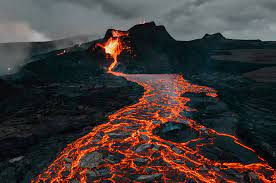



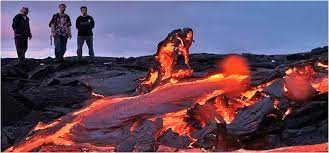
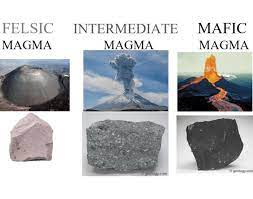

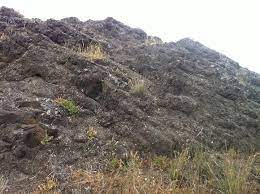











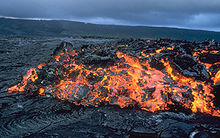
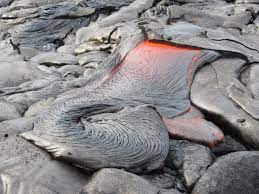
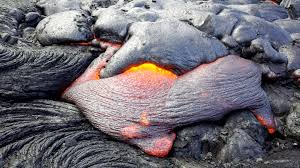


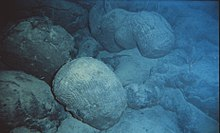



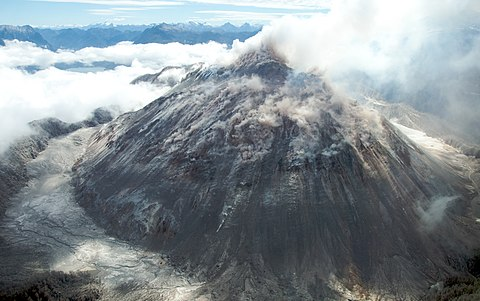
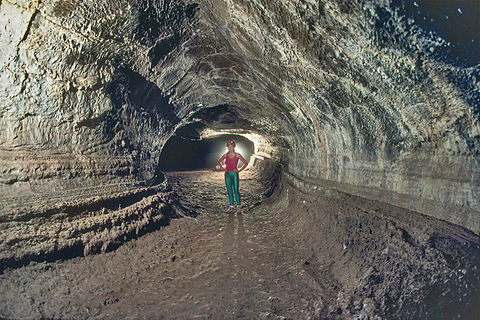







No comments:
Post a Comment